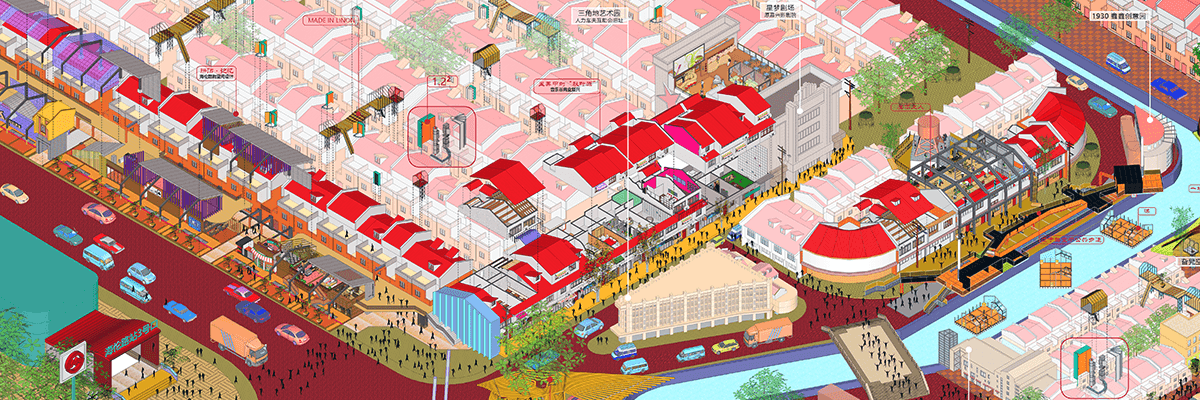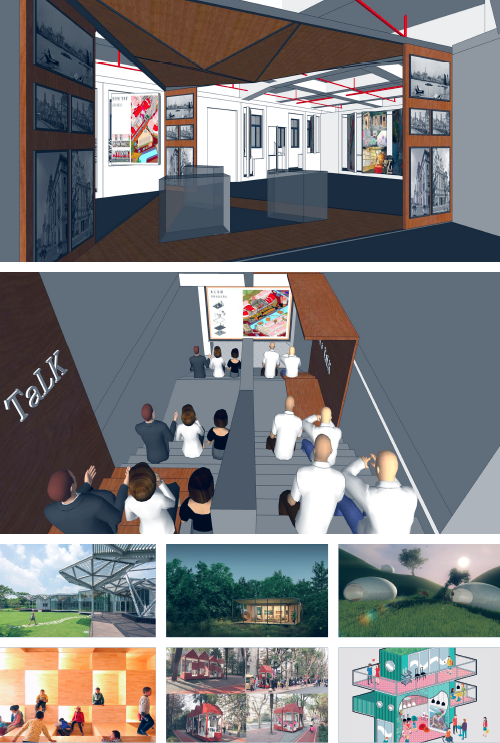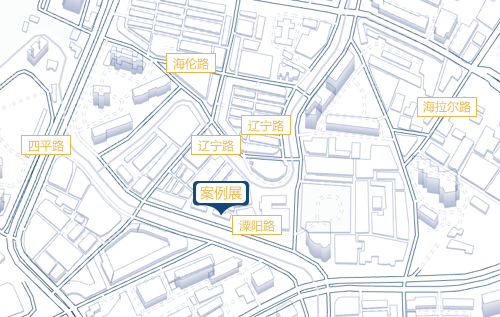Site Projects
-
Better Community, Better Life — Site Project of Pudong Colorful Community
-
Xinjing · New Scope — Site Project of Urban Regeneration in Beixinjing, Changning
-
Urban Micro Intervention: Musicify the Community — Site Project of Shanghai Music Valley Hongkou
-
Dual Radiation — Site Project of Urban Renewal at West Bund, Xuhui
-
Linking Zikawei — Site Project of Xuhui
-
“Double Exposure·Factory Rebirth” Jing'an Innovation Galaxy Site Project
-
Design Approach of Local and Historical Characters — Site Project of Xuhui
-
2017 “Iconic Shanghai” Series Exhibition

Urban Micro Intervention: Musicify the Community — Site Project of Shanghai Music Valley Hongkou
Host
- People’s Government of Hongkou District, Shanghai
Organizer
- Hongkou Planning and Land Authority
Co-organizers
- Shanghai Music Valley Group Co., Ltd
- Sub-district office of Tilanqiao
- Office of Leading Group of Cultural Creativity Industry Promotion of Hongkou District
Project Introduction
As a continuation of Hongkou Site Project in SUSAS 2015, and Let’s work Project in 2016, this 2017 project chooses its site at Music Valley and Tilanqiao, and professionals from College of Design and Innovation, Tongji University and renowned architecture offices are involved. The focal points of Music Valley area include promoting a musical maker industry, and micro-renovation of the Sanjiaodi (literally triangular field, formerly Hongkou Market). An immersive community museum is built, and a well-designed pedestrian service system is established to make Music Valley a better community. In order to collect first-hand materials of the transformation and renovation of Music Valley Community, a series of community surveys are planned. The synagogue, houses, shops, schools and other footprints of Jewish presence in Tilanqiao Historical and Cultural Landscape are revitalized and activated, enhancing the unique historical and cultural appeal of Hongkou District, and Shanghai in general.
Theme Interpretation
“Micro Urban Space Revival Plan” aims to find social-aware designers to “discover and study the lost spaces in city, and do design”, so as to activate “negative” spaces, make our communities, where we live, more positive and energetic. It also turns these “lost” spaces into essential platforms of private or public life of citizens, arousing sense of belonging in them. A number of middle-age or younger architects have stood out in response. As a continuation of the 2015 slogan, “Small Step, Big Change”, the 2017 projects holds “Micro Intervention, Macro Improve- ment” as the guiding principle, introducing experimental design and art thinking into public space planning while extending isolated sites into an interactive, participatory grid of space art.
Exhibition
Music Valley:
1. A well-designed pedestrian service system starts from the entrance pavilion, installs community VI and various information interfaces, contributing to a beautified and connected community. The system further extends to connect the two exhibition areas, Music Valley and North Bund, and will gradually improve the walking experience on the route.
2. A series of community surveys are planned to collect first-hand materials in the transformation and renovation of Music Valley, and their results will be incorporated into the community museum. Music Valley is a complicated mixture of historical buildings, creativity industrial park, large office towers, and typical Lilong. Its past, present and future are worthy of careful study and documentation. Aligned with the pedestrian tour system, a community museum whose permanent administrative and info center is placed in the Sanjiaodi, will be “immersed” into the general picture in a manner featuring micro intervention, network approach. The museum is a participatory element integrated into the community.
3. The experience hall and Akihabara Street are intended to attract SNH 48 fans, and appeal to the lifestyle of “New-new Generation”. They also serve the community and its residents at large, while revitalize the business atmosphere.
4. Retain installments on the roadside façade, create waterfront sceneries, illuminating the whole area with these highlight sites.
Tilanqiao Community:
1. Lilong Medium – Renovate empty houses in the community, and introduce new functions, such as creativity parks, and demonstrative studios. Self-inspired changes are particularly encouraged. In the meanwhile, these structures are expected to serve seniors and children with, for instance, libraries and play rooms.
2. From 2D to 3D – What is expected of the renovated gates doesn’t stay on a collection of planes, but should be a three-dimensional transformation, where the gates function as central pieces. The spaces will be rearranged in a holistic manner, taking roadside façade into consideration.
Pocket parks – the unauthorized plants will be removed to make room for accessible community public spaces. Despite the lack in economic benefits, the tiny urban parks are mini oxygen cylinder for urban people, inviting window shoppers, nearby residents and young people to sit, read, listen to music or play skateboard... They are serene domains amongst a buzzling world.
3. “One Shop One Product” Program – breaking away with traditional renovation approach, “One Shop One Product” is adopted. Palette is unified, and the presence of brand is reflected in logo and shop layout. Individualized design and improved environment are emphasized.



Venue
Second Floor, Sanjiaodi Art Park, Music Valley (No. 260 Jiaxing Road) Community Museum
Experience Hall, Sanjiaodi Art Park, Music Valley (No. 260 Jiaxing Road) Music Fair)
Waterside sceneries (Liaoning Road and ShajingHarbour sections of Music Valley) Micro-renovation of Tilanqiao Community

Period
October 2017 – January 2018

Public Transportation
Metro: Exit 3, Hailun Road Station (Line 4 & 10)
Bus: Siping Road and Suyang Road Stop (Line 100, 123, 14, 55);
Jiulong Road and Wujin Road Stop (Line 6)
Curators

Dai Chun
Initiator of “Micro Urban Space Revival Plan”. Founder of “Let’s talk FORUM”. Operating director and executive editor of Time+Architecture. Founder of Archiepos Studio.

Yu Ting
Leading architect of Wutuopia Lab. Guest professor of Southeast University. Initiator of “Micro Urban Space Revival Plan”. Founder of “Let’s talk FORUM”.